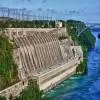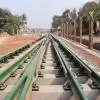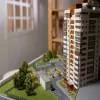- Home
- Real Estate
- Smart Hour

Smart Hour
A former mayor of Denver, Colorado, W Webb once remarked, ´The 19th century was a century of empires, the 20th century was a century of nation states, and the 21st century will be a century of cities.´
True that. Recent reports suggest that there are 21 mega cities world over with over 10 million people. By 2025, this number is expected to reach 29 with an additional five in Asia, two in Latin America, and one in Africa. China alone will have 221 cities with over 1 million people by 2025 (see ´Global Watch´ on page 132).
While cities use 60-80 per cent of the world´s annual energy needs, lighting alone represents 19 per cent of the world´s total electricity consumption.
India has one of the largest and fastest growing populations in the world. According to estimates, close to 590 million people will reside in urban areas by 2030 with over 68 cities with a population of over 1 million and, economically, will contribute over 70 per cent to the country´s GDP. To this, Angshik Chaudhuri, Chief of Staff, Smart+Connected Communities (S+CC), Cisco, says, ´It is imperative for these cities to be conducive for growth to propel India to the league of a global powerhouse.´ Ravi Kant Malhan, Director-Head Business Development: Smart Cities and Special Projects, Schneider Electric India, adds, ´While 68 will be twice the total number of European cities today, there will be 91 million urban Indian households by 2030, from the current 24 million.´
However, the task of developing such cities in India comes with its share of challenges: unplanned urbanisation, scarcity of resources, density of population, lack of basic citizen services and inadequate infrastructure, to name a few. With this, the last few years have seen the emergence of the concept of ´Smart Cities´, which aims to address these challenges. And with Budget 2014 allocating Rs 7,060 crore for the development of 100 smart cities, this concept appears to be high on the new Government´s agenda.
Planned vs unplanned
Most cities in India have not had the luxury to be planned. Jaijit Bhattacharya, Partner, Infrastructure and Government Services, KPMG in India, says, ´There are a mix of planned and unplanned sections and retrofit of planning on the unplanned sections.´ And Rakesh Kaul, Executive Director, Government and Public Sector Practice, PwC India, points out, ´Large Indian cities were planned and developed considering data and trends available for the time. However, rapid urbanisation and negative trends of explosive construction have laid tremendous stress on the infrastructure in some cities.´ Bhattacharya´s obvious choice of planned cities includes two prominent Greenfield ones: Chandigarh and New Raipur. He says, ´GIFT city is still a work in progress but would be the next planned, next-generation city.´ And Kaul cites Navi Mumbai and Gandhinagar as examples of newer planned cities.
Retrofitting existing cities
Every city needs to be efficient, sustainable and liveable. Hence, while Greenfield cities are on the upswing, one cannot ignore existing ones. ´It is imperative to upgrade existing cities into next-generation cities as one cannot shift overnight into Greenfield cities,´ maintains Bhattacharya, recalling an earlier experiment in the form of the creation of Daulatabad and everyone from Delhi being moved there lock, stock and barrel. ´Obviously, this is an extreme example but the outcome, nevertheless, was disastrous,´ he says. While Bhattacharya is certain that every city with a population of over 1 million needs to be prioritised for upgrade, Kaul believes all Tier-I and Tier-II cities are candidates for total transformation.
Advait Aundhkar, Advisory Consultant, All India Institute of Local Self Government, shares a different view. ´Apart from the megacities, there are many metros growing at a rapid pace,´ he says, highlighting that these cities do not have an identity or signature. For instance, Mumbai was visualised as a financial capital, Kolkata a port city, Bengaluru an IT hub in the 90s, and planning measures were taken to create an infrastructure to support these signature cities. ´India needs more such signature cities like Pune, Vadodara, Indore as culturally rich cities; Ambala, Nagpur as transport hubs; and Manesar as a logistics hub.´ He shares a list of 36 cities (see box) where urban master plans need a relook and restructured strategy.
Tech talk
A smart city requires seamless digital and physical infrastructure that will be shared efficiently across devices and applications to enhance end services and optimise costs. ´Therefore, information and communication technology (ICT) infrastructure should enable reliable and secure communication among various applications that can be built on top of the network and should accommodate future growth as the community expands,´ says Chaudhuri. Rahul Sharma, Executive Director & Partner, Global Business Services, IBM India/SA, adds, ´While one can create a livable city, ICT plays the lead role in making it a smart one.´ Hence, it forms the backbone of smart cities.
Tilak Raj Seth, Executive Vice President, Infrastructure & Cities Sector, Siemens Ltd, believes that technology has the answer to many urban challenges. ´Through the application of advanced software such as data analysis and intelligent algorithms, data can be interpreted and understood and a corresponding action initiated,´ he says. For instance, a building controls heating and lighting based on parameters such as occupancy and levels of daylight to reduce energy consumption by up to 30 per cent. Also, autonomous systems such as ventilation, heating, air-conditioning, lighting, safety and security can be integrated into one system for more efficient operations. Moreover, an acoustic monitoring system can detect damage to the wheel-sets of trains before a failure occurs, improving both safety and maintenance costs. Here, Malhan adds, ´If a city faces water availability or disruption issues, implementing SCADA systems to manage water flow can bring 30 per cent savings on the energy used to manage water systems, 20 per cent reduction in water loss, and 20 per cent reduction in water outage.´
Seth adds, ´Advanced technological progress in automation already contains the intelligence required to automate processes and improve efficiencies. Its ability to collect and communicate data offers opportunities for further optimisation with the addition of IT in the upper layers; field devices like sensors in roads, buildings, trains, power, gas and water grids can monitor and measure conditions and performance and collect data on external factors that could impact performance.´ The result: Many processes and systems can be further automated to enhance performance and reduce operating costs.
Further, the use of information integration to create a smart city follows an evolutionary process making it more advanced in using technology to manage infrastructure.
Malhan elaborates: The first step in the process is deployment of sensors throughout city infrastructure to collect raw data, which is then transmitted through communication networks, either wire-line or wireless. Then, real-time systems can use the data to automate management of infrastructure, resulting in performance and cost advantages. Integrating isolated systems and sharing data yield further performance benefits through coordinated actions and holistic management of the city as a system-of-systems. This can be further leveraged by cities by applying advanced analytics tools to support optimisation, as well as provide data back to the residents through public services that improve daily lives.
Smart savings
So, with technology and the key components of a smart city - smart buildings, public and government services, education, utilities, healthcare, transportation - in place, what smart savings can one expect? Malhan says, ´Schneider Electric India offers smart city solutions for energy, water, buildings, mobility, IT, public services and this can, on average, save up to 30 per cent energy, 15 per cent reduction in water losses and 20 per cent reduction in travel time.´
And Chaudhuri shares, ´For Building 14 of the Cisco Campus, Bengaluru, in the areas of maintenance-intelligent HVAC systems and emergency management among others, Cisco saves up to $150,000 every year, even at partial implementation. Also, for ICT-enabled smart utilities, in India´s first smart grid pilot in Puducherry with the Department of Electricity and Power Grid Corporation of India (PGCIL), the smart infrastructure is expected to reduce transmission losses from 22.6 per cent to 8.86 per cent and help collect dues and identify sources of power thefts in real time.´
The real opportunity According to estimates by McKinsey & Co, India would need to invest up to $1 trillion in multiple areas by 2020 to build futuristic cities. For instance, to meet urban demand, we will have to build between 700 million sq m and 900 million sq m of residential and commercial space a year. To support this further, 350-400 km of metros and subways and 19,000-25,000 km of road lanes every year will be required.
Development of this scale is unprecedented in India. Considering our vision for smart cities, Kaul is certain that opportunities will arise for a wide variety of players, especially device manufacturers, system integrators, device deployment specialists, network providers, mobile app developers and environment-friendly construction material providers.
Moreover, some early stage initiatives by governments include GIFT City in Gujarat, Naya Raipur in Chhattisgarh and another 24 cities being planned under the 1,483 km Delhi-Mumbai Industrial Corridor (DMIC). Of these 24, seven smart cities are under development, no less of an opportunity. In fact, Cisco is preparing an ICT master plan for four smart cities proposed under the DMIC project: Dholera Special Investment Region, Gujarat; Shendra-Bidkin Mega Industrial Park, Maharashtra; Manesar Bawal Investment Region, Haryana; and Khushkhera Bhiwadi Neemrana Investment Region, Rajasthan. ´The master plan will dovetail with the physical master plan so that, over a period of time, real-time control and governance can be done sitting in a central integrated operations centre,´ informs Chaudhury. Also, IBM is one of the key partners for DMIC in developing a city based on international standards in close proximity to Dighi Port. Sharma says, ´This project provides the foundation to use technology in new ways to drive economic development, job growth and improve the quality of life for citizens.´
The opportunities related to the DMIC smart cities can be further divided into external and internal infrastructure projects. External projects suitable for implementation through PPP mode include power supply and distribution, water supply and distribution, railways, airports, highways, MRTS and logistic parks. Internal projects include land improvement, roadwork, earthwork, sewerage, storm water drainage, flood management and solid waste management. Of this, projects that can be considered through the PPP route include, landscaping and signage, street lighting, building works, telecommunications, gas grid, captive power plant, renewable energy plant and light rail transport.
Government in action
With its stated aim to build 100 smart cities, the Government´s allocation of Rs 500 crore for improving broadband connectivity at the village level and the proposal of Rs 7,060 crore has been very encouraging. Besides, it has announced measures to encourage FDI and PPP, which will bring in additional investments in this area. So, who all will ramp up to meet this challenge? Seth is confident that Siemens will be involved with these smart cities in some form or the other. He says, ´Providing cities with the best solutions is a strategically important task for us.´ Also, while Sharma looks forward to IBM being an integral part of this initiative, Bhattacharya responds, ´Starting from planners and business and operation modelling experts to civil engineers and sustainability experts, an army of professionals needs to be geared up to execute the vision.´ Kaul adds, ´State governments, city administrators and planners, infrastructure development companies, real-estate developers, network providers, police and manufacturers provide inputs to these segments.´
In Chaudhuri´s view, ´All these announcements translate into huge potential for vendors involved in the creation of smart cities including developers and their suppliers, infrastructure companies, technology companies (including services, hardware and software) and a host of related vendors.´ He further elaborates on Cisco´s recent partnership with Electronics City Industries Association (ELCIA) in Bengaluru to set up Asia´s first ´Internet of Things (IoT) Innovation Hub´. ´This project will lay the foundation for a new ecosystem to help electronic system design and manufacturing (ESDM) companies to develop solutions for city infrastructure management (CIM), including smart parking, CCTV surveillance, street lighting and water management or leak detection, and community messaging.´
In conclusion
All said and done, one can´t deny that the smart city sector for long has been in the ´I-know-it-when-I-see-it´ phase, without a universally agreed definition. However, given that smart cities in India are now a matter of ´when´ and not ´if´, it is time to step up and embrace a much-needed model.
Mumbai´s sister city: Palava
Living here pays for itself. Palava is on the brink of exponential growth with an annual GDP of Rs 60,000 crore (by 2025). Direct consumption (of goods and services) will grow from Rs 3,500 crore in 2015 to Rs 12,000 crore by 2020, and Rs 25,000 crore by 2025. Consumers can be divided into three major groups: citizens, entrepreneurs and businessmen, and tourists. Shaishav Dharia, Development Director, Palava City, elaborates upon the planning of this smart city that spans over 4,000 acre Focus: Palava was born out of a vision to create a city of opportunity with unparalleled quality of life nurturing business, creating jobs and delivering growth. To achieve this, we are planning ahead and embedding smart elements in design and infrastructure. This will help ensure safety, efficiency and governance with participation from citizens and in parallel provide the foundations for businesses with future-ready infrastructure. Population: There will be over 100,000 families by 2025 and an average annual household income of over Rs 10 lakh.
Employment opportunities: With over 3.5 lakh job openings by 2025, the city will attract millions of job seekers, entrepreneurs and high-ranking executives.
Smart technology: 100 per cent of the water is recycled and treated with General Electric´s MBR technology for landscape and flushing. So, we are reducing our dependence on portable water by 40-50 per cent. Also in our Lodha World School within Palava, the rooftop already has a full solar installation that powers common areas; within three to four years, this will pay for itself.
Cost: By 2025, we are looking at a capital outlay of about Rs 14,000 crore. In terms of the smart city project itself, the incremental cost -- infrastructure we have to build - will be about Rs 400 crore over the next 10 years. In Phase-I, as of now, we have spent about Rs 4,000-5,000 crore on the overall development. RoI: About 6,000 flats have already been delivered and 3,000 families are living here today. We have a brand and have delivered so much. That keeps our economics intact.
Tenders: On the technology side, IBM has worked with us to design the overall smart city solution. They are building it and will run it. Further, we have partners like General Electric for water solutions, Sun Edilson for solar, Philips for street lights and Schneider Electric for power. We will always be open to vendors and suppliers who embody the same vision.
36 potential signature cities SMART ACT
Capital ideas: Naya Raipur
The state capital of Chhattisgarh is taking shape and how! Divided in 40 sectors of which 21 are residential, and spread across 237 sq km, this Greenfield city is being developed in three layers: the infrastructure; peripheral area; and airport. Layer one, the infrastructure, including road network, sewerage, drainage and water supply system, is completely done. Amit Kataria, CEO, Naya Raipur Development Authority, tells us what makes this project smart..
Focus: With our DPR under preparation, we have identified key areas that constitute a smart city. First is land and estate management; second, controlling services (water supply, sewage system, draining system) from a single command and control centre; third, security and surveillance (the police functions); fourth, monitoring traffic and signalling; and, finally city level LED street lighting (first-of-its-kind in India) and electrification. This has helped save almost 40 per cent on electricity.
Population: Construction commenced in 2008 and the first phase of the master development plan is for 2031. The present population is only around 40,000. But when completed in 2031, our target is to have a population of 5.6 lakh.
Employment opportunities: At present, there are nearly 10,000 government employees working here. Also, as it is a knowledge city, we are offering land to the best institutions, schools and hospitals, and developing an airport and railway lines. Moreover, there is 1,200 acre of industrial land for IT and electronic-based industries.
ICT: IT will manage the city. We have planned a central command and control centre to control all services. The communication system is planned for both wired and wireless services for voice, data and value-added services (VAS). We have already laid an optical fibre network across the city. This is the backbone for communication and data transfer, whether it is signals, street lights or water supply, etc.
Cost: With the total project cost estimated at Rs 25,000 crore, about Rs 5,000 crore has been invested. About Rs 600 crore has been estimated for two phases for the smart city project; the major investment is in IT. Green building is also a key feature of the smart city.
RoI: There are no actual returns. Revenue can be generated from the services we offer. The return is only the savings on spending we will incur later.
Tenders: Our DPR is at a very advanced stage. In the next two to three months, we will float tenders for components, including security and surveillance, land and estate management system, the SCADA system for water supply and sewage control, and developing the IT base in the command centre.
Global Watch!
Did you know that the city of Rio de Janeiro collects information from 30 different city departments about transportation, water, energy, weather and other conditions? Those conditions are then communicated to powerful computers that crunch the data and present it in a unified control centre.
Indeed, growing urbanisation drives change and demands smarter solutions. The UN projects that the world´s cities will need to accommodate an additional 3 billion residents by the middle of the century; and that 40,000 new cities will be needed worldwide. In this context, Michael J Dixon, General Manager, Smarter Cities, IBM, says, ´What we see around the world are cities tackling what are of greatest interest to them like the management and effective use of water, public safety, transport, emergency management, energy, health, social services and education.´
Success stories
Echoing the saying that ´it´s smart to learn from your mistakes and even smarter to learn from the mistakes of others´, Jesse Berst, Chairman, Smart Cities Council, agrees there are best practices that can be emulated. He tells us that China has at least 200 smart
city projects underway. Other cities include Amsterdam, Barcelona (a world leader), Nice, which is doing wonders with payments, and several cities in Spain, Italy and Brazil. Also, Vancouver is focusing on sustainability and San Francisco on policing, transportation and parking.
While Dixon believes that, globally, China, Europe and the US are focusing on addressing traffic conditions, he points to Japan as a unique case study. ´Since the earthquake and Tsunami some years ago now, Japan closed seven nuclear reactors and is struggling to meet its electricity demands. So it is focused on optimisation of energy.´ He adds that Copenhagen is focused on becoming a city with the lowest carbon footprint in the world. Further, while Latin America is keen on infrastructure and asset management, Columbia in particular focuses on public safety. As for Africa, cities are focusing on basics that the West takes for granted: water systems, effective transport, healthcare, education.
Where does India stand? To what extent can cities in a developing country like India apply technology?
´The problems for the developing world are greater,´ says Berst, pointing out that urban influx is more rapid, population increasing and challenges of congestion, crime and pollution often greater than anywhere else. That said, Dixon sees immense potential in India.
´One of the exciting things about India is the enormous growth that can be found here,´ he says. ´The new Government´s approach towards building smart cities is an effective step forward.´ Every urban activity can be enhanced by intelligence. As Berst says, ´It depends on what the city´s economic engines are and what its issues are.´ In Indian cities, he believes the opportunity lies in transportation, energy (under smart grid or renewable), or water. He insists, though, that the foundation has to be telecommunication. ´You need robust telecommunications - both wired and wireless - to carry the signals back and forth to all these smart devices."
The future beckons
Eventually, IT lies at the core of smart cities. ´Traditional Indian IT vendors and service companies like Infosys and Wipro, even if they do not realise this, are doing things that are central to a smart city,´ says Berst. To this, Dixon adds, ´For 5,000 years, cities did not change. It is only in the past 20 years that we have seen electronic infrastructure give us the chance to address some issues. And, in years to come, one will witness changing ways in which cities operate through the application of technologies.´ It is starting to happen.
Global Rankings
Boyd Cohen, Director of Innovation, Associate Professor, Entrepreneurship, Sustainability & Smart Cities, Universidad del Desarrollo, has been benchmarking smart cities for several years, leveraging a framework he calls ´the smart cities wheel´. His rankings from 2013 are listed below:
Europe´s Top 5
1. Copenhagen: One of the lowest carbon footprints/capita in the world (less than 2 tonne/capita).
2. Amsterdam: Focused on using the city as an urban laboratory for open data and new mobility solutions.
3. Vienna: A goal of obtaining 50 per cent of its energy from renewables by 2030.
4. Barcelona: Testing sensors on everything from noise and air contamination to traffic congestion and even waste management.
5. Paris: An impressive initiative has been its complete embrace of shared mobility.
1. Seattle: One of the only North American cities with over 1,000 open data sets offered for transparency.
2. Boston: Cameras and inductive loops are used to manage traffic and acoustic sensors to identify gunshots
3. San Francisco: Leader in embracing sustainability and smart urban development.
4. Washington DC: Second only behind New York in the use of biking, walking and public transit (54.6 per cent) for daily commuting.
5. New York: Pioneered the adoption of electric vehicles and has embraced open data.
Latin America´s Top 5
1. Santiago: Good metro system with the highest per capita use in the region.
2. Mexico City: Leader in smart governance in Latin America.
3. Bogota: BRTS is along the most extensive and utilised systems in the world (1.65 million daily riders).
4. Buenos Aires: Has an entire ministry devoted to becoming smarter, called the Ministry of Modernisation.
5. Rio de Janeiro: Using the infusion of capital to make the city smarter and more sustainable.
Asia/Pacific´s Top 5
1. Seoul: Over 1,200 open data sets for use by the general public and private sector.
2. Singapore: One of the lowest carbon footprints of any major city in the world (around 2. 7 tonne of CO2 per capita).
3. Tokyo: First in the world to establish a city-based cap and trade programme in 2010.
4. Hong Kong: Innovation and Technology Commission, established in 2000, supports the creation of five clusters: automotive, ICT, logistics, nanotechnologies and textiles.
5. Auckland: Home to two-thirds of the top 200 companies.
(To view the complete listing, log on to www.ConstructionWorld.in/webx)
SMART ACT
A knowledge-economy vision: SmartCity Kochi
You can walk to work in the upcoming SmartCity Kochi! Planning for the knowledge city includes more than 30 per cent open green area, eco-tone area, rainwater harvesting ponds, decentralised STPs, solar power, bio-gas from solid waste, conservation of endemic floral species, treatment and re-use of waste water, cycle tracks, 26-m-wide internal roads and energy-efficient buildings. What´s more, building systems have been integrated with city infrastructure and lifestyle features to provide ´smart features´ to the process, community and end-users. Gigo Joseph, CEO, SmartCity Kochi, tells us what makes this project smart..
Focus: Promoted by the Kerala Government and TECOM Investments, a subsidiary of Dubai Holding, SmartCity Kochi is designed as a fully integrated hub for ICT, media, finance and research and innovation clusters, attracting companies from within India and overseas. We plan to complete the project by 2020.
The first phase will provide road connectivity, power and water for the entire campus along with the first building of 650,000 sq ft. The next step will be to increase capacity. The total cost of the project is estimated to be $1 billion.
ICT: Today, a city´s performance depends on physical infrastructure plus the availability and quality of knowledge communication and social infrastructure. Key features include a propriety network distribution centre and a fully digital telecommunications network with fibre-optic cables linking Kochi to the world. Also, a fully redundancy power system large-scale power distribution centre is fed from two sources via a dedicated protected tunnel. The entire infrastructure is budgeted at Rs 400 crore.
Employment opportunities: About 6.5 million sq ft built-up area has been planned for knowledge workers. This is expected to generate 90,000 jobs by 2020, considering the total population will be around 1.2 lakh. Also, in 246 acre, about 6.21 million sq ft will be specifically for IT/ITES/allied services. The average revenue productivity of IT/ITES employees is about $30,000 per year.
This translates to minimum business revenue of $2.7 billion. In addition, each IT job is expected to create 1.5 to two supporting jobs such as travel, operations, finance, accounting, retail and entertainment outside.
Tenders: Upcoming tenders include 33/11 kv substations, 220/11 kv substations, bridges, water receiving and distribution, STP, external landscape development, solar panels, interior finishing, etc. We are also looking for more co-developers to join in residential, hotels, hospital, IT/ITES and entertainment projects.
- Smart cities
- Denver
- Colorado,Angshik Chaudhuri
- Ravi Kant Malhan
- Schneider Electric India
- Citizen Services
- Inadequate Infrastructure
- Jaijit Bhattacharya
- Rakesh Kaul
- KPMG
- PwC India
- Raipur
- Advait Aundhkar
- Kolkata
- Mumbai
- Pune
- Vadodara
- Indore
- ICT
- Rahul Sharma
- ICT
- Tilak Raj Seth
- Siemens Ltd
- SCADA systems
- software
- Building
- Heating
- Lighting
- Roads
- Trains
- Power
- Gas,Water G
Smart cities are the way forward for India, throwing up new windows of opportunity for the municipal government, technology companies, consultants, service providers, and citizens. A former mayor of Denver, Colorado, W Webb once remarked, ´The 19th century was a century of empires, the 20th century was a century of nation states, and the 21st century will be a century of cities.´ True that. Recent reports suggest that there are 21 mega cities world over with over 10 million people. By 2025, this number is expected to reach 29 with an additional five in Asia, two in Latin America, and one in Africa. China alone will have 221 cities with over 1 million people by 2025 (see ´Global Watch´ on page 132). While cities use 60-80 per cent of the world´s annual energy needs, lighting alone represents 19 per cent of the world´s total electricity consumption. India has one of the largest and fastest growing populations in the world. According to estimates, close to 590 million people will reside in urban areas by 2030 with over 68 cities with a population of over 1 million and, economically, will contribute over 70 per cent to the country´s GDP. To this, Angshik Chaudhuri, Chief of Staff, Smart+Connected Communities (S+CC), Cisco, says, ´It is imperative for these cities to be conducive for growth to propel India to the league of a global powerhouse.´ Ravi Kant Malhan, Director-Head Business Development: Smart Cities and Special Projects, Schneider Electric India, adds, ´While 68 will be twice the total number of European cities today, there will be 91 million urban Indian households by 2030, from the current 24 million.´ However, the task of developing such cities in India comes with its share of challenges: unplanned urbanisation, scarcity of resources, density of population, lack of basic citizen services and inadequate infrastructure, to name a few. With this, the last few years have seen the emergence of the concept of ´Smart Cities´, which aims to address these challenges. And with Budget 2014 allocating Rs 7,060 crore for the development of 100 smart cities, this concept appears to be high on the new Government´s agenda. Planned vs unplanned Most cities in India have not had the luxury to be planned. Jaijit Bhattacharya, Partner, Infrastructure and Government Services, KPMG in India, says, ´There are a mix of planned and unplanned sections and retrofit of planning on the unplanned sections.´ And Rakesh Kaul, Executive Director, Government and Public Sector Practice, PwC India, points out, ´Large Indian cities were planned and developed considering data and trends available for the time. However, rapid urbanisation and negative trends of explosive construction have laid tremendous stress on the infrastructure in some cities.´ Bhattacharya´s obvious choice of planned cities includes two prominent Greenfield ones: Chandigarh and New Raipur. He says, ´GIFT city is still a work in progress but would be the next planned, next-generation city.´ And Kaul cites Navi Mumbai and Gandhinagar as examples of newer planned cities. Retrofitting existing cities Every city needs to be efficient, sustainable and liveable. Hence, while Greenfield cities are on the upswing, one cannot ignore existing ones. ´It is imperative to upgrade existing cities into next-generation cities as one cannot shift overnight into Greenfield cities,´ maintains Bhattacharya, recalling an earlier experiment in the form of the creation of Daulatabad and everyone from Delhi being moved there lock, stock and barrel. ´Obviously, this is an extreme example but the outcome, nevertheless, was disastrous,´ he says. While Bhattacharya is certain that every city with a population of over 1 million needs to be prioritised for upgrade, Kaul believes all Tier-I and Tier-II cities are candidates for total transformation. Advait Aundhkar, Advisory Consultant, All India Institute of Local Self Government, shares a different view. ´Apart from the megacities, there are many metros growing at a rapid pace,´ he says, highlighting that these cities do not have an identity or signature. For instance, Mumbai was visualised as a financial capital, Kolkata a port city, Bengaluru an IT hub in the 90s, and planning measures were taken to create an infrastructure to support these signature cities. ´India needs more such signature cities like Pune, Vadodara, Indore as culturally rich cities; Ambala, Nagpur as transport hubs; and Manesar as a logistics hub.´ He shares a list of 36 cities (see box) where urban master plans need a relook and restructured strategy. Tech talk A smart city requires seamless digital and physical infrastructure that will be shared efficiently across devices and applications to enhance end services and optimise costs. ´Therefore, information and communication technology (ICT) infrastructure should enable reliable and secure communication among various applications that can be built on top of the network and should accommodate future growth as the community expands,´ says Chaudhuri. Rahul Sharma, Executive Director & Partner, Global Business Services, IBM India/SA, adds, ´While one can create a livable city, ICT plays the lead role in making it a smart one.´ Hence, it forms the backbone of smart cities. Tilak Raj Seth, Executive Vice President, Infrastructure & Cities Sector, Siemens Ltd, believes that technology has the answer to many urban challenges. ´Through the application of advanced software such as data analysis and intelligent algorithms, data can be interpreted and understood and a corresponding action initiated,´ he says. For instance, a building controls heating and lighting based on parameters such as occupancy and levels of daylight to reduce energy consumption by up to 30 per cent. Also, autonomous systems such as ventilation, heating, air-conditioning, lighting, safety and security can be integrated into one system for more efficient operations. Moreover, an acoustic monitoring system can detect damage to the wheel-sets of trains before a failure occurs, improving both safety and maintenance costs. Here, Malhan adds, ´If a city faces water availability or disruption issues, implementing SCADA systems to manage water flow can bring 30 per cent savings on the energy used to manage water systems, 20 per cent reduction in water loss, and 20 per cent reduction in water outage.´ Seth adds, ´Advanced technological progress in automation already contains the intelligence required to automate processes and improve efficiencies. Its ability to collect and communicate data offers opportunities for further optimisation with the addition of IT in the upper layers; field devices like sensors in roads, buildings, trains, power, gas and water grids can monitor and measure conditions and performance and collect data on external factors that could impact performance.´ The result: Many processes and systems can be further automated to enhance performance and reduce operating costs. Further, the use of information integration to create a smart city follows an evolutionary process making it more advanced in using technology to manage infrastructure. Malhan elaborates: The first step in the process is deployment of sensors throughout city infrastructure to collect raw data, which is then transmitted through communication networks, either wire-line or wireless. Then, real-time systems can use the data to automate management of infrastructure, resulting in performance and cost advantages. Integrating isolated systems and sharing data yield further performance benefits through coordinated actions and holistic management of the city as a system-of-systems. This can be further leveraged by cities by applying advanced analytics tools to support optimisation, as well as provide data back to the residents through public services that improve daily lives. Smart savings So, with technology and the key components of a smart city - smart buildings, public and government services, education, utilities, healthcare, transportation - in place, what smart savings can one expect? Malhan says, ´Schneider Electric India offers smart city solutions for energy, water, buildings, mobility, IT, public services and this can, on average, save up to 30 per cent energy, 15 per cent reduction in water losses and 20 per cent reduction in travel time.´ And Chaudhuri shares, ´For Building 14 of the Cisco Campus, Bengaluru, in the areas of maintenance-intelligent HVAC systems and emergency management among others, Cisco saves up to $150,000 every year, even at partial implementation. Also, for ICT-enabled smart utilities, in India´s first smart grid pilot in Puducherry with the Department of Electricity and Power Grid Corporation of India (PGCIL), the smart infrastructure is expected to reduce transmission losses from 22.6 per cent to 8.86 per cent and help collect dues and identify sources of power thefts in real time.´ The real opportunity According to estimates by McKinsey & Co, India would need to invest up to $1 trillion in multiple areas by 2020 to build futuristic cities. For instance, to meet urban demand, we will have to build between 700 million sq m and 900 million sq m of residential and commercial space a year. To support this further, 350-400 km of metros and subways and 19,000-25,000 km of road lanes every year will be required. Development of this scale is unprecedented in India. Considering our vision for smart cities, Kaul is certain that opportunities will arise for a wide variety of players, especially device manufacturers, system integrators, device deployment specialists, network providers, mobile app developers and environment-friendly construction material providers. Moreover, some early stage initiatives by governments include GIFT City in Gujarat, Naya Raipur in Chhattisgarh and another 24 cities being planned under the 1,483 km Delhi-Mumbai Industrial Corridor (DMIC). Of these 24, seven smart cities are under development, no less of an opportunity. In fact, Cisco is preparing an ICT master plan for four smart cities proposed under the DMIC project: Dholera Special Investment Region, Gujarat; Shendra-Bidkin Mega Industrial Park, Maharashtra; Manesar Bawal Investment Region, Haryana; and Khushkhera Bhiwadi Neemrana Investment Region, Rajasthan. ´The master plan will dovetail with the physical master plan so that, over a period of time, real-time control and governance can be done sitting in a central integrated operations centre,´ informs Chaudhury. Also, IBM is one of the key partners for DMIC in developing a city based on international standards in close proximity to Dighi Port. Sharma says, ´This project provides the foundation to use technology in new ways to drive economic development, job growth and improve the quality of life for citizens.´ The opportunities related to the DMIC smart cities can be further divided into external and internal infrastructure projects. External projects suitable for implementation through PPP mode include power supply and distribution, water supply and distribution, railways, airports, highways, MRTS and logistic parks. Internal projects include land improvement, roadwork, earthwork, sewerage, storm water drainage, flood management and solid waste management. Of this, projects that can be considered through the PPP route include, landscaping and signage, street lighting, building works, telecommunications, gas grid, captive power plant, renewable energy plant and light rail transport. Government in action With its stated aim to build 100 smart cities, the Government´s allocation of Rs 500 crore for improving broadband connectivity at the village level and the proposal of Rs 7,060 crore has been very encouraging. Besides, it has announced measures to encourage FDI and PPP, which will bring in additional investments in this area. So, who all will ramp up to meet this challenge? Seth is confident that Siemens will be involved with these smart cities in some form or the other. He says, ´Providing cities with the best solutions is a strategically important task for us.´ Also, while Sharma looks forward to IBM being an integral part of this initiative, Bhattacharya responds, ´Starting from planners and business and operation modelling experts to civil engineers and sustainability experts, an army of professionals needs to be geared up to execute the vision.´ Kaul adds, ´State governments, city administrators and planners, infrastructure development companies, real-estate developers, network providers, police and manufacturers provide inputs to these segments.´ In Chaudhuri´s view, ´All these announcements translate into huge potential for vendors involved in the creation of smart cities including developers and their suppliers, infrastructure companies, technology companies (including services, hardware and software) and a host of related vendors.´ He further elaborates on Cisco´s recent partnership with Electronics City Industries Association (ELCIA) in Bengaluru to set up Asia´s first ´Internet of Things (IoT) Innovation Hub´. ´This project will lay the foundation for a new ecosystem to help electronic system design and manufacturing (ESDM) companies to develop solutions for city infrastructure management (CIM), including smart parking, CCTV surveillance, street lighting and water management or leak detection, and community messaging.´ In conclusion All said and done, one can´t deny that the smart city sector for long has been in the ´I-know-it-when-I-see-it´ phase, without a universally agreed definition. However, given that smart cities in India are now a matter of ´when´ and not ´if´, it is time to step up and embrace a much-needed model. Mumbai´s sister city: Palava Living here pays for itself. Palava is on the brink of exponential growth with an annual GDP of Rs 60,000 crore (by 2025). Direct consumption (of goods and services) will grow from Rs 3,500 crore in 2015 to Rs 12,000 crore by 2020, and Rs 25,000 crore by 2025. Consumers can be divided into three major groups: citizens, entrepreneurs and businessmen, and tourists. Shaishav Dharia, Development Director, Palava City, elaborates upon the planning of this smart city that spans over 4,000 acre Focus: Palava was born out of a vision to create a city of opportunity with unparalleled quality of life nurturing business, creating jobs and delivering growth. To achieve this, we are planning ahead and embedding smart elements in design and infrastructure. This will help ensure safety, efficiency and governance with participation from citizens and in parallel provide the foundations for businesses with future-ready infrastructure. Population: There will be over 100,000 families by 2025 and an average annual household income of over Rs 10 lakh. Employment opportunities: With over 3.5 lakh job openings by 2025, the city will attract millions of job seekers, entrepreneurs and high-ranking executives. Smart technology: 100 per cent of the water is recycled and treated with General Electric´s MBR technology for landscape and flushing. So, we are reducing our dependence on portable water by 40-50 per cent. Also in our Lodha World School within Palava, the rooftop already has a full solar installation that powers common areas; within three to four years, this will pay for itself. Cost: By 2025, we are looking at a capital outlay of about Rs 14,000 crore. In terms of the smart city project itself, the incremental cost -- infrastructure we have to build - will be about Rs 400 crore over the next 10 years. In Phase-I, as of now, we have spent about Rs 4,000-5,000 crore on the overall development. RoI: About 6,000 flats have already been delivered and 3,000 families are living here today. We have a brand and have delivered so much. That keeps our economics intact. Tenders: On the technology side, IBM has worked with us to design the overall smart city solution. They are building it and will run it. Further, we have partners like General Electric for water solutions, Sun Edilson for solar, Philips for street lights and Schneider Electric for power. We will always be open to vendors and suppliers who embody the same vision. 36 potential signature cities Agra-Mathura Allahabad Ambala Anand Belgaum? Coimbatore Cuttack Ghaziabad Guwahati Gwalior Indore Kanpur Karnal Kochi Kozhikode Ludhiana Madurai Manesar Mangalore Mysore Nagpur Pantnagar Patna Puducherry Ranchi Rohtak Salem Shimla Surat Tiruchirapalli Trivandrum Udaipur Vadodara Varanasi Vijaywada Vishakhapatnam SMART ACT Capital ideas: Naya Raipur The state capital of Chhattisgarh is taking shape and how! Divided in 40 sectors of which 21 are residential, and spread across 237 sq km, this Greenfield city is being developed in three layers: the infrastructure; peripheral area; and airport. Layer one, the infrastructure, including road network, sewerage, drainage and water supply system, is completely done. Amit Kataria, CEO, Naya Raipur Development Authority, tells us what makes this project smart.. Focus: With our DPR under preparation, we have identified key areas that constitute a smart city. First is land and estate management; second, controlling services (water supply, sewage system, draining system) from a single command and control centre; third, security and surveillance (the police functions); fourth, monitoring traffic and signalling; and, finally city level LED street lighting (first-of-its-kind in India) and electrification. This has helped save almost 40 per cent on electricity. Population: Construction commenced in 2008 and the first phase of the master development plan is for 2031. The present population is only around 40,000. But when completed in 2031, our target is to have a population of 5.6 lakh. Employment opportunities: At present, there are nearly 10,000 government employees working here. Also, as it is a knowledge city, we are offering land to the best institutions, schools and hospitals, and developing an airport and railway lines. Moreover, there is 1,200 acre of industrial land for IT and electronic-based industries. ICT: IT will manage the city. We have planned a central command and control centre to control all services. The communication system is planned for both wired and wireless services for voice, data and value-added services (VAS). We have already laid an optical fibre network across the city. This is the backbone for communication and data transfer, whether it is signals, street lights or water supply, etc. Cost: With the total project cost estimated at Rs 25,000 crore, about Rs 5,000 crore has been invested. About Rs 600 crore has been estimated for two phases for the smart city project; the major investment is in IT. Green building is also a key feature of the smart city. RoI: There are no actual returns. Revenue can be generated from the services we offer. The return is only the savings on spending we will incur later. Tenders: Our DPR is at a very advanced stage. In the next two to three months, we will float tenders for components, including security and surveillance, land and estate management system, the SCADA system for water supply and sewage control, and developing the IT base in the command centre. Global Watch! Did you know that the city of Rio de Janeiro collects information from 30 different city departments about transportation, water, energy, weather and other conditions? Those conditions are then communicated to powerful computers that crunch the data and present it in a unified control centre. Indeed, growing urbanisation drives change and demands smarter solutions. The UN projects that the world´s cities will need to accommodate an additional 3 billion residents by the middle of the century; and that 40,000 new cities will be needed worldwide. In this context, Michael J Dixon, General Manager, Smarter Cities, IBM, says, ´What we see around the world are cities tackling what are of greatest interest to them like the management and effective use of water, public safety, transport, emergency management, energy, health, social services and education.´ Success stories Echoing the saying that ´it´s smart to learn from your mistakes and even smarter to learn from the mistakes of others´, Jesse Berst, Chairman, Smart Cities Council, agrees there are best practices that can be emulated. He tells us that China has at least 200 smart city projects underway. Other cities include Amsterdam, Barcelona (a world leader), Nice, which is doing wonders with payments, and several cities in Spain, Italy and Brazil. Also, Vancouver is focusing on sustainability and San Francisco on policing, transportation and parking. While Dixon believes that, globally, China, Europe and the US are focusing on addressing traffic conditions, he points to Japan as a unique case study. ´Since the earthquake and Tsunami some years ago now, Japan closed seven nuclear reactors and is struggling to meet its electricity demands. So it is focused on optimisation of energy.´ He adds that Copenhagen is focused on becoming a city with the lowest carbon footprint in the world. Further, while Latin America is keen on infrastructure and asset management, Columbia in particular focuses on public safety. As for Africa, cities are focusing on basics that the West takes for granted: water systems, effective transport, healthcare, education. Where does India stand? To what extent can cities in a developing country like India apply technology? ´The problems for the developing world are greater,´ says Berst, pointing out that urban influx is more rapid, population increasing and challenges of congestion, crime and pollution often greater than anywhere else. That said, Dixon sees immense potential in India. ´One of the exciting things about India is the enormous growth that can be found here,´ he says. ´The new Government´s approach towards building smart cities is an effective step forward.´ Every urban activity can be enhanced by intelligence. As Berst says, ´It depends on what the city´s economic engines are and what its issues are.´ In Indian cities, he believes the opportunity lies in transportation, energy (under smart grid or renewable), or water. He insists, though, that the foundation has to be telecommunication. ´You need robust telecommunications - both wired and wireless - to carry the signals back and forth to all these smart devices." The future beckons Eventually, IT lies at the core of smart cities. ´Traditional Indian IT vendors and service companies like Infosys and Wipro, even if they do not realise this, are doing things that are central to a smart city,´ says Berst. To this, Dixon adds, ´For 5,000 years, cities did not change. It is only in the past 20 years that we have seen electronic infrastructure give us the chance to address some issues. And, in years to come, one will witness changing ways in which cities operate through the application of technologies.´ It is starting to happen. Global Rankings Boyd Cohen, Director of Innovation, Associate Professor, Entrepreneurship, Sustainability & Smart Cities, Universidad del Desarrollo, has been benchmarking smart cities for several years, leveraging a framework he calls ´the smart cities wheel´. His rankings from 2013 are listed below: Europe´s Top 5 1. Copenhagen: One of the lowest carbon footprints/capita in the world (less than 2 tonne/capita). 2. Amsterdam: Focused on using the city as an urban laboratory for open data and new mobility solutions. 3. Vienna: A goal of obtaining 50 per cent of its energy from renewables by 2030. 4. Barcelona: Testing sensors on everything from noise and air contamination to traffic congestion and even waste management. 5. Paris: An impressive initiative has been its complete embrace of shared mobility. North America´s Top 5 1. Seattle: One of the only North American cities with over 1,000 open data sets offered for transparency. 2. Boston: Cameras and inductive loops are used to manage traffic and acoustic sensors to identify gunshots 3. San Francisco: Leader in embracing sustainability and smart urban development. 4. Washington DC: Second only behind New York in the use of biking, walking and public transit (54.6 per cent) for daily commuting. 5. New York: Pioneered the adoption of electric vehicles and has embraced open data. Latin America´s Top 5 1. Santiago: Good metro system with the highest per capita use in the region. 2. Mexico City: Leader in smart governance in Latin America. 3. Bogota: BRTS is along the most extensive and utilised systems in the world (1.65 million daily riders). 4. Buenos Aires: Has an entire ministry devoted to becoming smarter, called the Ministry of Modernisation. 5. Rio de Janeiro: Using the infusion of capital to make the city smarter and more sustainable. Asia/Pacific´s Top 5 1. Seoul: Over 1,200 open data sets for use by the general public and private sector. 2. Singapore: One of the lowest carbon footprints of any major city in the world (around 2. 7 tonne of CO2 per capita). 3. Tokyo: First in the world to establish a city-based cap and trade programme in 2010. 4. Hong Kong: Innovation and Technology Commission, established in 2000, supports the creation of five clusters: automotive, ICT, logistics, nanotechnologies and textiles. 5. Auckland: Home to two-thirds of the top 200 companies. (To view the complete listing, log on to www.ConstructionWorld.in/webx) SMART ACT A knowledge-economy vision: SmartCity Kochi You can walk to work in the upcoming SmartCity Kochi! Planning for the knowledge city includes more than 30 per cent open green area, eco-tone area, rainwater harvesting ponds, decentralised STPs, solar power, bio-gas from solid waste, conservation of endemic floral species, treatment and re-use of waste water, cycle tracks, 26-m-wide internal roads and energy-efficient buildings. What´s more, building systems have been integrated with city infrastructure and lifestyle features to provide ´smart features´ to the process, community and end-users. Gigo Joseph, CEO, SmartCity Kochi, tells us what makes this project smart.. Focus: Promoted by the Kerala Government and TECOM Investments, a subsidiary of Dubai Holding, SmartCity Kochi is designed as a fully integrated hub for ICT, media, finance and research and innovation clusters, attracting companies from within India and overseas. We plan to complete the project by 2020. The first phase will provide road connectivity, power and water for the entire campus along with the first building of 650,000 sq ft. The next step will be to increase capacity. The total cost of the project is estimated to be $1 billion. ICT: Today, a city´s performance depends on physical infrastructure plus the availability and quality of knowledge communication and social infrastructure. Key features include a propriety network distribution centre and a fully digital telecommunications network with fibre-optic cables linking Kochi to the world. Also, a fully redundancy power system large-scale power distribution centre is fed from two sources via a dedicated protected tunnel. The entire infrastructure is budgeted at Rs 400 crore. Employment opportunities: About 6.5 million sq ft built-up area has been planned for knowledge workers. This is expected to generate 90,000 jobs by 2020, considering the total population will be around 1.2 lakh. Also, in 246 acre, about 6.21 million sq ft will be specifically for IT/ITES/allied services. The average revenue productivity of IT/ITES employees is about $30,000 per year. This translates to minimum business revenue of $2.7 billion. In addition, each IT job is expected to create 1.5 to two supporting jobs such as travel, operations, finance, accounting, retail and entertainment outside. Tenders: Upcoming tenders include 33/11 kv substations, 220/11 kv substations, bridges, water receiving and distribution, STP, external landscape development, solar panels, interior finishing, etc. We are also looking for more co-developers to join in residential, hotels, hospital, IT/ITES and entertainment projects.
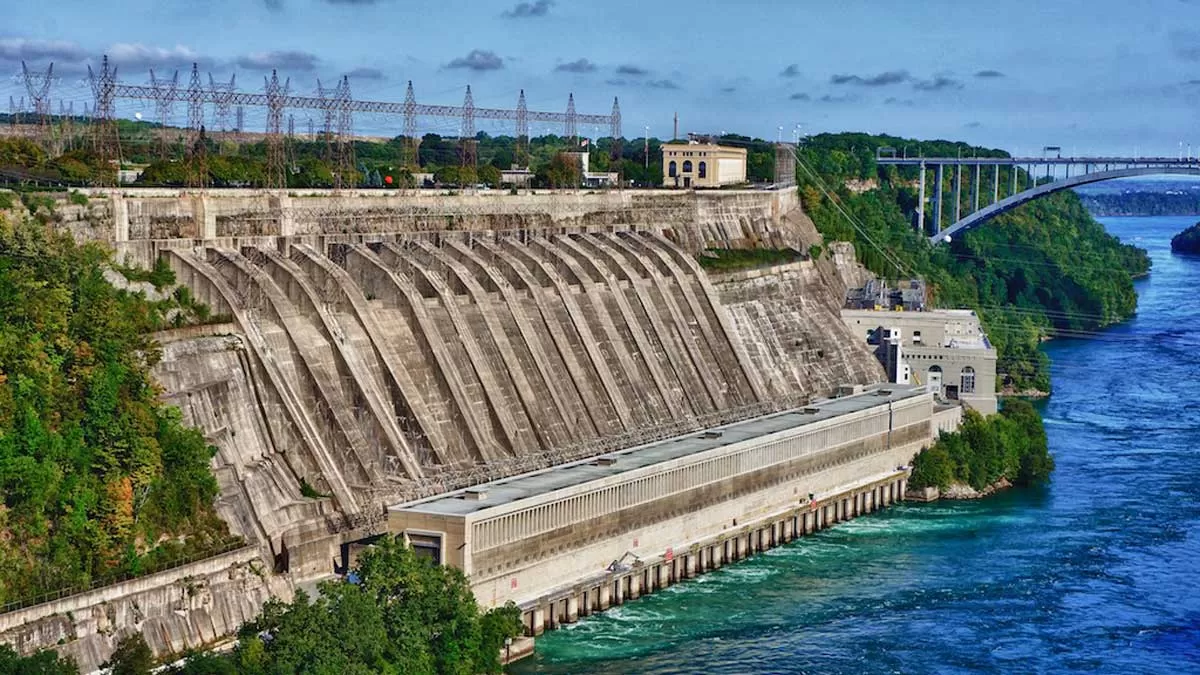
NHPC Plans to Raise Rs 20 Bn via Asset Securitisation in FY26
NHPC, India’s largest hydropower company, is planning to raise around Rs 20 billion through asset securitization in the upcoming financial year as part of its strategy to fund expansion projects. Although the specific assets for securitization have not yet been finalized, internal discussions are on-going. In the previous financial year (FY25), NHPC successfully met its monetization target by securitizing the free cash flow (return on equity) of its Dulhasti Power Station located in the Union Territory of Jammu & Kashmir. This securitization, spanning the next eight years, generated total p..
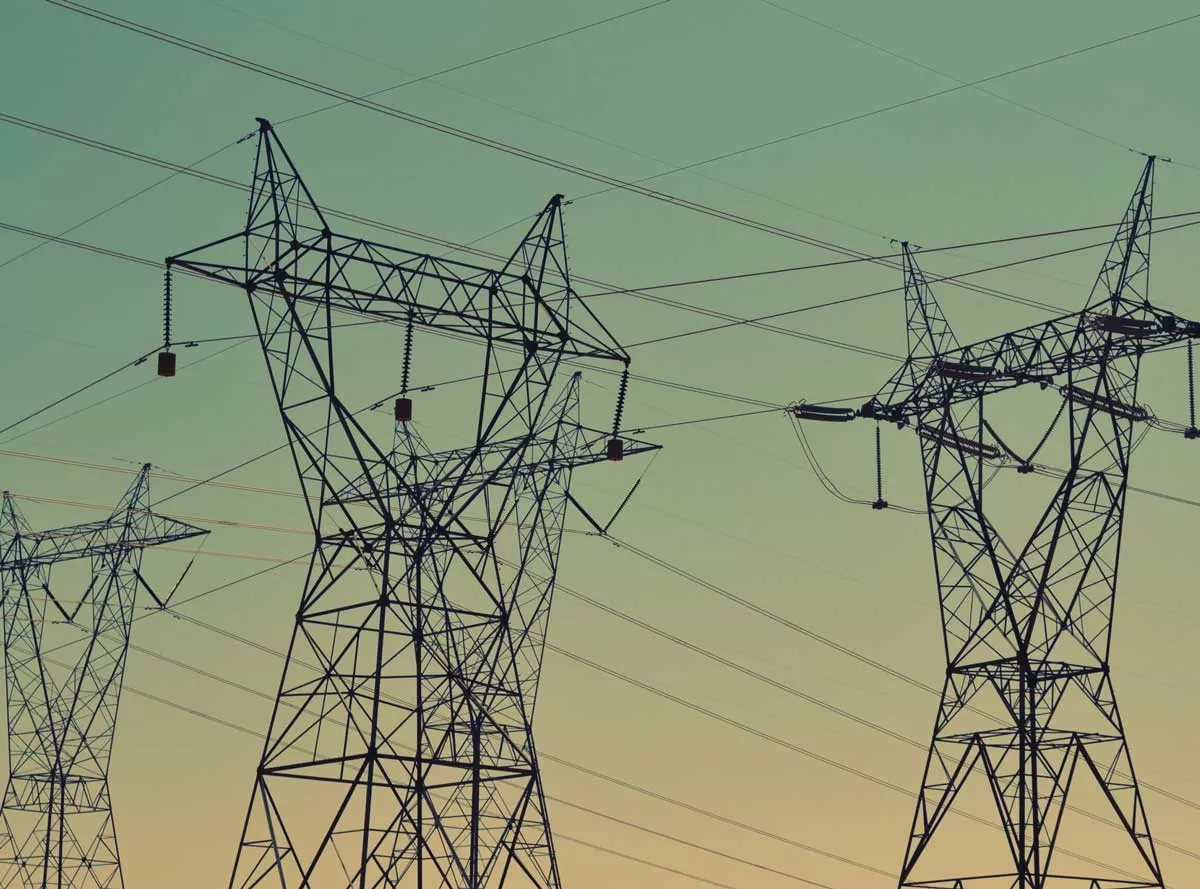
BHEL Consortium Bags Bhadla-Fatehpur UHVDC Transmission Project
Bharat Heavy Electricals (BHEL), in consortium with Hitachi Energy India, has secured a major contract from Rajasthan Part I Power Transmission, a wholly owned subsidiary of Adani Energy Solutions (AESL). The contract involves the design and execution of a 6,000 MW, 800 kV bi-pole and bi-directional High Voltage Direct Current (HVDC) transmission system. This system will facilitate the transfer of renewable energy from Bhadla in Rajasthan to Fatehpur in Uttar Pradesh, a key industrial and transport hub. Scheduled for completion by 2029, the HVDC link is a vital step in India's efforts to achi..
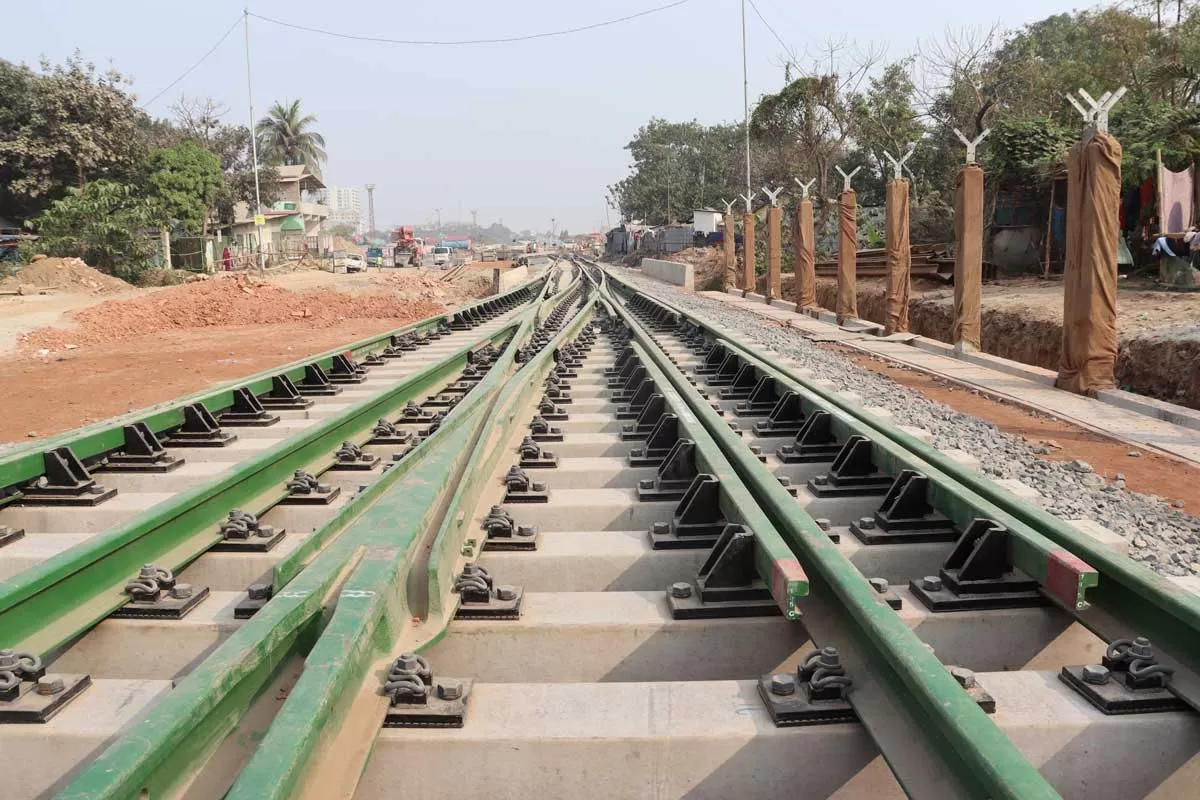
PFC Sanctions Rs 35 Bn Loan for Chhattisgarh Rail Project
Power Finance Corporation (PFC), a state-owned financial institution under the Ministry of Power, has sanctioned a loan of Rs 35.17 billion to Chhattisgarh East Railway (CERL) for the development of the East Rail Corridor Project in Chhattisgarh. The loan agreement, amounting to Rs 35.16 billion, was formally executed on March 28, 2025. The East Rail Corridor Project is currently under construction and is designed primarily to facilitate the efficient transportation of coal from various coal mines located in the region. The corridor will play a crucial role in connecting these coal sources to..
Latest Updates
Recommended for you
Subscribe to Our Newsletter
Get daily newsletters around different themes from Construction world.
Advertisement
Advertisement
subscribe to the newsletter
Don't miss out on valuable insights and opportunities
to connect with like minded professionals




